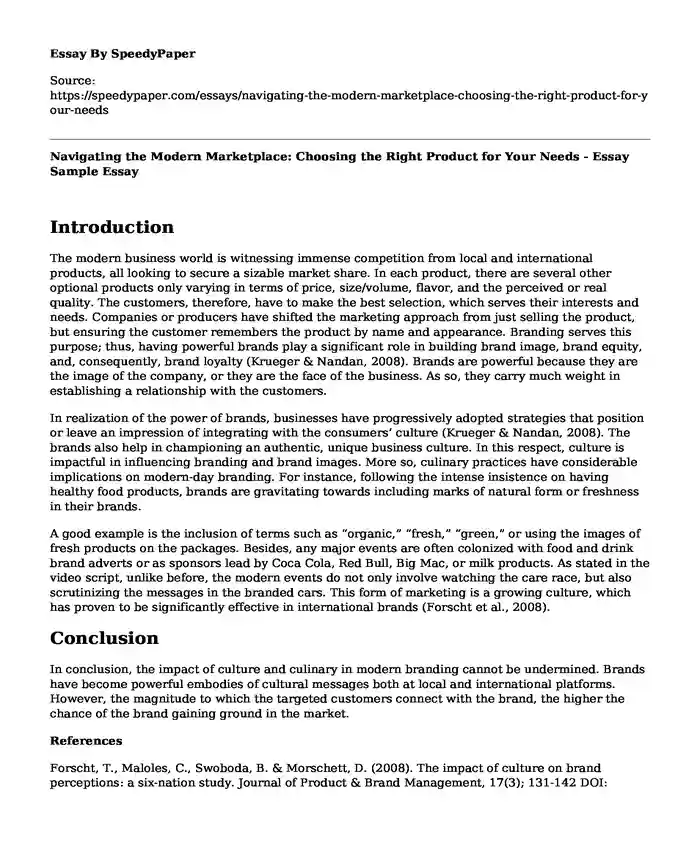Introduction
The modern business world is witnessing immense competition from local and international products, all looking to secure a sizable market share. In each product, there are several other optional products only varying in terms of price, size/volume, flavor, and the perceived or real quality. The customers, therefore, have to make the best selection, which serves their interests and needs. Companies or producers have shifted the marketing approach from just selling the product, but ensuring the customer remembers the product by name and appearance. Branding serves this purpose; thus, having powerful brands play a significant role in building brand image, brand equity, and, consequently, brand loyalty (Krueger & Nandan, 2008). Brands are powerful because they are the image of the company, or they are the face of the business. As so, they carry much weight in establishing a relationship with the customers.
In realization of the power of brands, businesses have progressively adopted strategies that position or leave an impression of integrating with the consumers’ culture (Krueger & Nandan, 2008). The brands also help in championing an authentic, unique business culture. In this respect, culture is impactful in influencing branding and brand images. More so, culinary practices have considerable implications on modern-day branding. For instance, following the intense insistence on having healthy food products, brands are gravitating towards including marks of natural form or freshness in their brands.
A good example is the inclusion of terms such as “organic,” “fresh,” “green,” or using the images of fresh products on the packages. Besides, any major events are often colonized with food and drink brand adverts or as sponsors lead by Coca Cola, Red Bull, Big Mac, or milk products. As stated in the video script, unlike before, the modern events do not only involve watching the care race, but also scrutinizing the messages in the branded cars. This form of marketing is a growing culture, which has proven to be significantly effective in international brands (Forscht et al., 2008).
Conclusion
In conclusion, the impact of culture and culinary in modern branding cannot be undermined. Brands have become powerful embodies of cultural messages both at local and international platforms. However, the magnitude to which the targeted customers connect with the brand, the higher the chance of the brand gaining ground in the market.
References
Forscht, T., Maloles, C., Swoboda, B. & Morschett, D. (2008). The impact of culture on brand perceptions: a six-nation study. Journal of Product & Brand Management, 17(3); 131-142 DOI: 10.1108/10610420810875052
Krueger, D. & Nandan, S. (2008). Branding in the global arena: the role of culture. The Marketing Management Journal, 18(1); 30 – 38. http://www.mmaglobal.org/publications/MMJ/MMJ-Issues/2008-Spring/MMJ-2008-Spring-Vol18-Issue1-Krueger-Nandan-pp30-38.pdf
Cite this page
Navigating the Modern Marketplace: Choosing the Right Product for Your Needs - Essay Sample. (2023, Sep 14). Retrieved from https://speedypaper.net/essays/navigating-the-modern-marketplace-choosing-the-right-product-for-your-needs
Request Removal
If you are the original author of this essay and no longer wish to have it published on the SpeedyPaper website, please click below to request its removal:
- Essay Example: Ethical Issues in Automotive Engineering
- Free Essay with an Empirical Study of Social Media as an Effective Marketing Tool
- Effects of the US-China Trade War on Russia. Essay Sample
- Free Essay Example - Blockchain Technology
- Essay Sample on Strategic Planning and Business Policy
- Essay Sample on Dick's Sporting Goods
- Paper Example. Role of World Trade Organizations in the Global Trade
Popular categories





